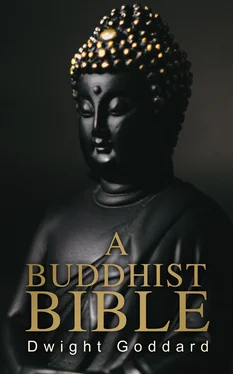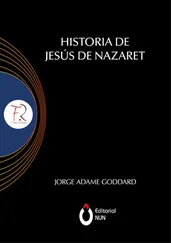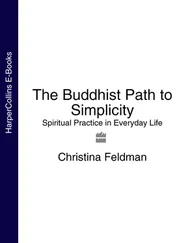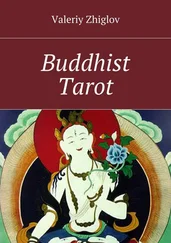1. Laotsu's Tao and Wu-wei, by Dwight Goddard and Henri Borel. Pub. by Brentano .
SELF-REALISATION OF NOBLE WISDOM
Table of Contents
Based on Professor Suzuki's Translation of the Lankavatara
Table of Contents
Professor Suzuki's Studies in the Lankavatara Sutra was published in 1929, and his TRANSLATION OF' THE LANKAVATARA in 1932 (George Routledge & Son, London). The books awakened a great deal of interest in the LANKAVATARA which, until these books appeared, had been almost unknown to the European world. They also awakened a great deal of admiration for Professor Suzuki's scholarship and patience in carrying to a conclusion so great a task and in so scholarly a manner.
Owing to the nature of the original Sanskrit text, the English translation is very difficult reading and Professor Suzuki felt, if the Sutra was ever to be read by many general readers, that an editing of it in the interest of easier reading was almost a necessity. For that reason he encouraged the editor to undertake the task, but, of course, Professor Suzuki is in no sense to be held responsible for its character or interpretations.
Under the general rube adopted by the editor, the long introductory chapter, the "meat-eating" chapter, and the chapter on Dharani, were omitted entirely as being later accretions and in no direct sense relating to the theme of the Sutra. The long chapter of verses is also omitted as being obscure and repetitious; and as the essence of the verses; is given in the prose sections, they can be omitted without loss for the sake of easier reading. In addition, certain small sections are omitted because of their obscurity, or because they do not appear to add anything to the elucidation of the main thesis.
Under the second rule, the Sutra was cut up into more or less small sections and rearranged into something like an orderly sequence. Under the third rule, these small sections were interwoven and condensed by omitting repetitions, matter that was obscure or tiresomely argumentative. Under the fourth rule, a minimum amount of interpretation was introduced. This was absolutely necessary if the Sutra was to be easily or agreeably read, but the interpretations were confined to matter found within the text itself. Often the author of the Sutra would refer to an important doctrine by a single compound word which if translated would be meaningless to modern occidental ears; in such cases there was nothing else to be done, if the reading was to be easily understood, but to interpret it at more or less length, but I have been scrupulously careful not to do any more than was necessary to bring out the full meaning of the text.
As readers become interested in the Sutra by the reading of this Version they are urged to continue their study of it from the original Sanskrit, or from Prof. Suzuki's books.
Table of Contents
As an extended introduction to the study of LANKAVATARA SUTRA has been given by Prof. Suzuki in both his STUDIES and TRANSLATION, only a very brief statement is necessary here.
Nothing is known as to its author, the time of its composition, or as to its original form. There is a myth that it originally consisted of 100,000 verses, and the second chapter of the present text has a footnote which reads: "Here ends the second chapter of the Collection of all the Dharmas, taken from the Lankavatara of 36,000 verses." Apparently it was originally a collection of verses covering all the main teachings of Mahayana Buddhism. This vast collection of verses became a source from which the Masters selected texts for their discourses. As the verses were very epigrammatic, obscure and disconnected, in the course of time the discourses were remembered and the verses largely forgotten, until in the present text there are remaining only 884 verses. The present text has every appearance of being something in the way of a disciple's notebook in which he had written down extracts or outlines of his master's discourses on some of these verses.
It is generally felt that the present text must have been compiled early in the First Century, probably a little earlier than the AWAKENING OF FAITH by Ashvagosha, which doctrinally it greatly resembles. The earliest date connected with it is the date of the first Chinese translation made by Dharmaraksha about A.D. 420 and which was lost before 700. Three other Chinese translations have been made: one by Gunabhadra in 443; one by Bodhiruci in 513; and one by Shikshananda about 700. There is also one Tibetan version.
The Sutra has always been a favorite with the Ch’an Sect (Zen, in Japan) and has had a great deal to do with that sect's origin and development. There is a tradition that when Bodhidharma handed over his begging-bowl and robe to his successor that he also gave him his copy of the Lankavatara , saying, that he needed no other sutra. In the early days of the Ch’an Sect the Sutra was very much studied, but because of its difficulties and obscurities it gradually dropped out of common use and has been very much neglected for the past thousand years. But during that time many of the great Masters have made it a subject of study and many commentaries have been written upon it. Although other sutras have been more commonly read none have been more influential in fixing the general doctrines of Mahayana Buddhism, and in bringing about the general adoption of Buddhism in China, Korea and Japan.
In closing just a paragraph must be given about the characteristic teachings of the LANKAVATARA. It is not written as a philosophical treatise is written, to establish a certain system of thought, but was written to elucidate the profoundest experience that comes to the human spirit. It everywhere deprecates dependence upon words and doctrines and urges upon all the wisdom of making a determined effort to attain this highest experience. Again and again it repeats with variations the refrain: "Mahamati, you and all the Bodhisattva-Mahasattvas should avoid the erroneous reasonings of the philosophers and seek this self-realisation of Noble Wisdom." For this reason the LANKAVATARA is to be classed with the intuitional scriptures of the Orient, rather than with the philosophical literature of the Occident. In China it combined easily with the accepted belief of the Chinese in Laotsu's conception of the Tao and its ethical idealism to make the Buddhism of China and Japan eminently austere and practical, rather than philosophical and emotional.
Table of Contents
Thus have i heard. The Blessed One once appeared in the Castle of Lanka which is on the summit of Mt. Malaya in the midst of the great Ocean. A great many Bodhisattva-Mahasattvas had miraculously assembled from all the Buddha-lands, and a large number of bhikshus were gathered there. The Bodhisattva-Mahasattvas with Mahamati at their head were all perfect masters of the various Samadhis, the tenfold Self-mastery, the ten Powers, and the six Psychic Faculties. Having been anointed by the Buddha's own hands, they all well understood the significance of the objective world; they all knew how to apply the various means, teachings and disciplinary measures according to the various mentalities and behaviors of beings; they were all thoroughly versed in the five Dharmas, the three Svabhavas, the eight Vijnanas, and the twofold Egolessness.
The Blessed One, knowing of the mental agitations going on in the minds of those assembled (like the surface of the ocean stirred into waves by the passing winds), and his great heart moved by compassion, smiled and said: In the days of old the Tathagatas of the past who were Arhats and fully-enlightened Ones came to the Castle of Lanka on Mount Malaya and discoursed on the Truth of Noble Wisdom that is beyond the reasoning knowledge of the philosophers as well as being beyond the understanding of ordinary disciples and masters; and which is realisable only within the inmost consciousness; for your sakes, I too, would discourse on the same Truth. All that is seen in the world is devoid of effort and action because all things in the world are like a dream, or like an image miraculously projected. This is not comprehended by the philosophers and the ignorant, but those who thus see things see them truthfully. Those who see things otherwise walk in discrimination and, as they depend upon discrimination, they cling to dualism. The world as seen by discrimination is like seeing one's own image reflected in a mirror, or one's shadow, or the moon reflected in water, or an echo heard in the valley. People grasping their own shadows of discrimination become attached to this thing and that thing and failing to abandon dualism they go on forever discriminating and thus never attain tranquillity. By tranquillity is meant Oneness, and Oneness gives birth to the highest Samadhi which is gained by entering into the realm of Noble Wisdom that is realisable only within one's inmost consciousness.
Читать дальше












